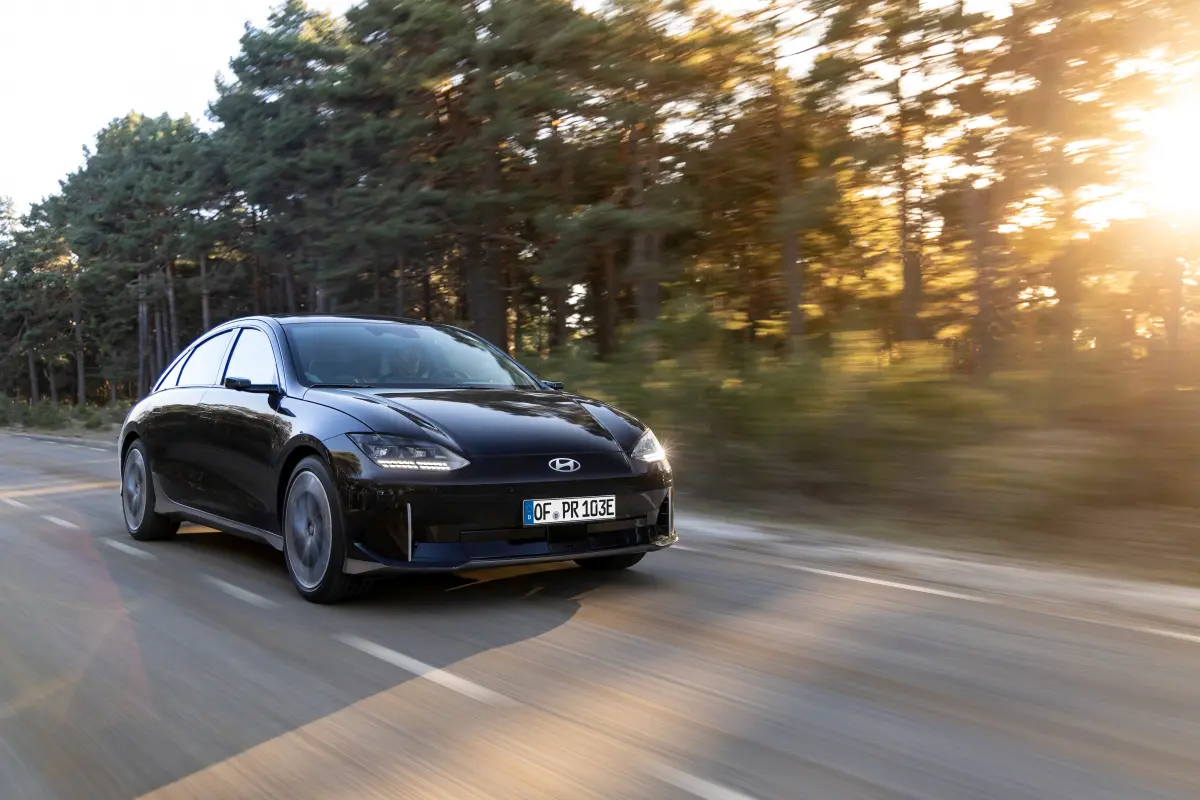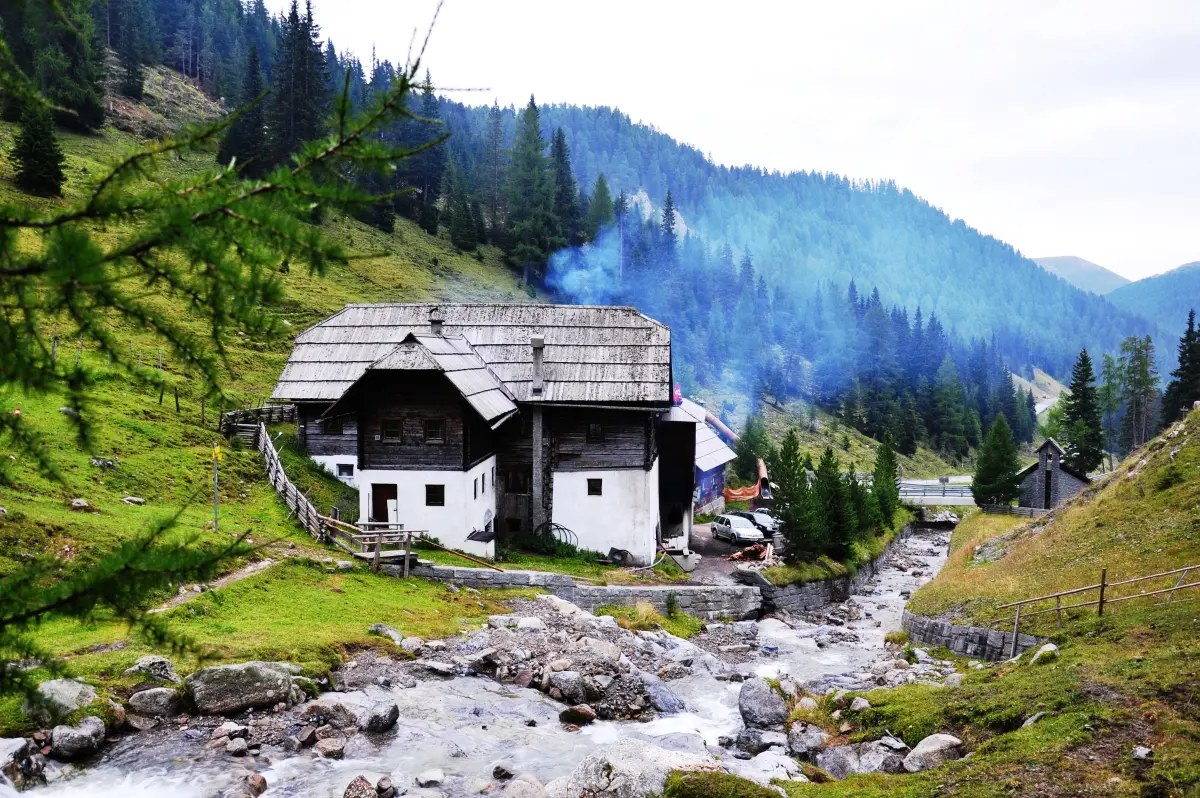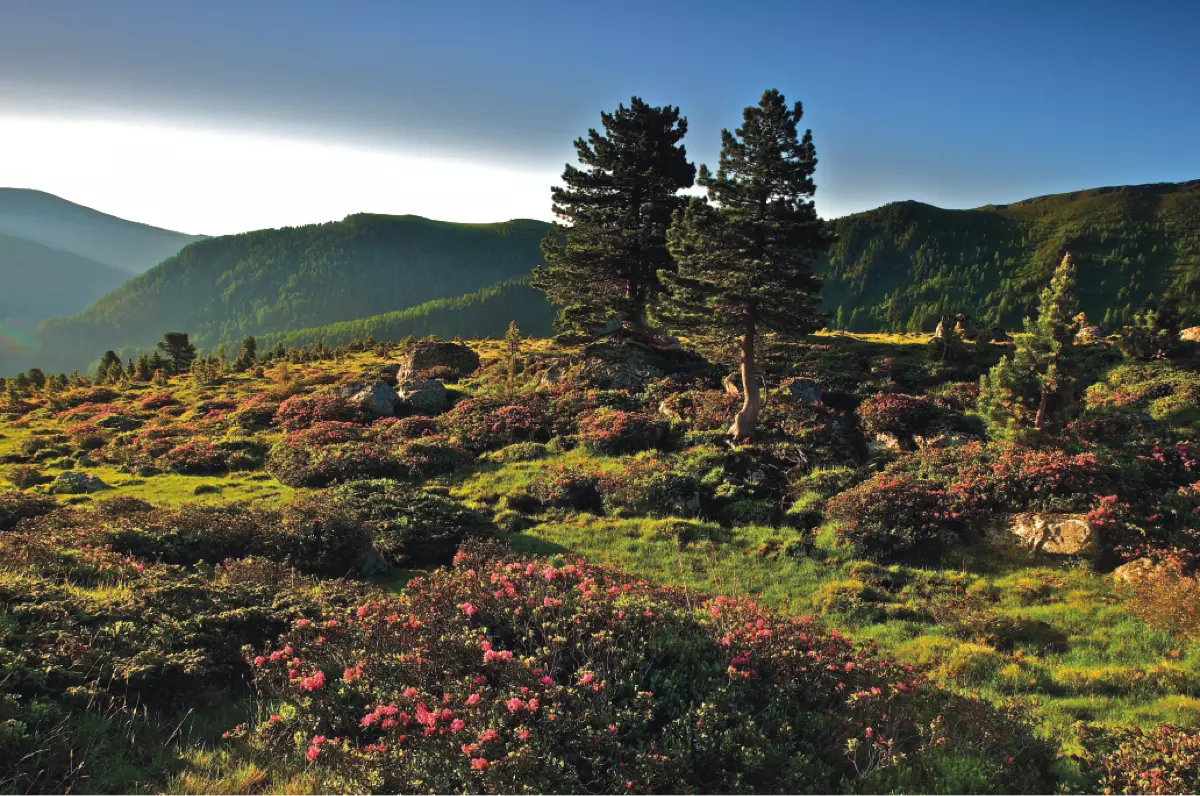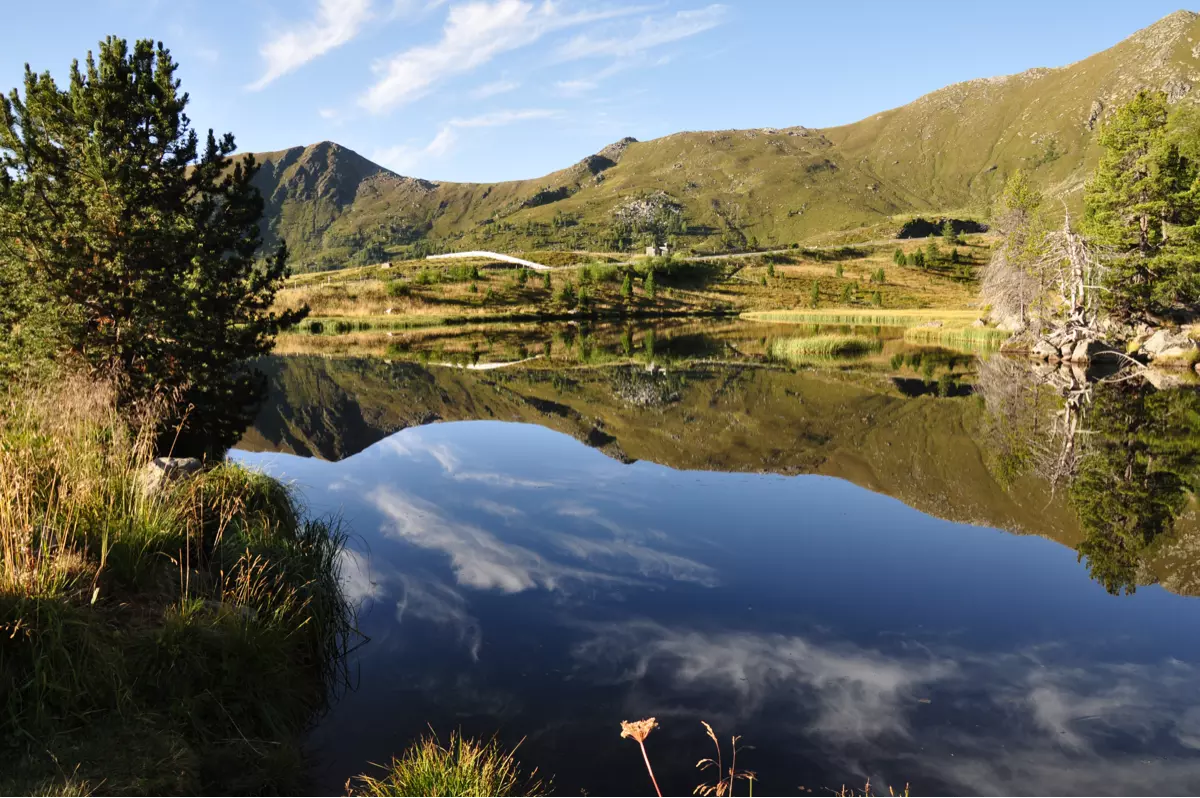Range anxiety - what is it?
Impressions of the Hyundai IONIQ 6The journey was to take us from Munich to Carinthia, more precisely to Bad Kleinkirchheim, located in the middle of the Millstätter See/Nockberge region. Just a few years ago, not only e-mobility skeptics would have rightly raised the question of whether a trip to the mountains of over 300 kilometers in an electric car would not degenerate into stress in view of the few charging options on the route, keyword: range anxiety. Nowadays, however, even longer journeys should no longer pose a major challenge in view of the rapid expansion of the fast-charging infrastructure along the highways and the significantly higher ranges of many "electric cars. And as our relaxed trip to the neighboring country showed, any fear of being stranded in the middle of nowhere without electricity would have been completely unfounded. Especially since the manufacturer claims that the IONIQ 6 has a range of almost 600 kilometers with 18-inch rims and a larger battery. To say it in advance, we did not reach this rather theoretical benchmark despite summer temperatures, but a range of around 500 kilometers turned out to be quite feasible with a relaxed driving style. This is not primarily due to a particularly high battery capacity, which in view of the size of the vehicle with a length of 4.86 meters is in the expected range of 77.4 kWh (53 kWh in the base model), but rather the good consumption values are due to the excellent drag coefficient of 0.21 of the streamlined sedan, especially at slightly higher speeds.
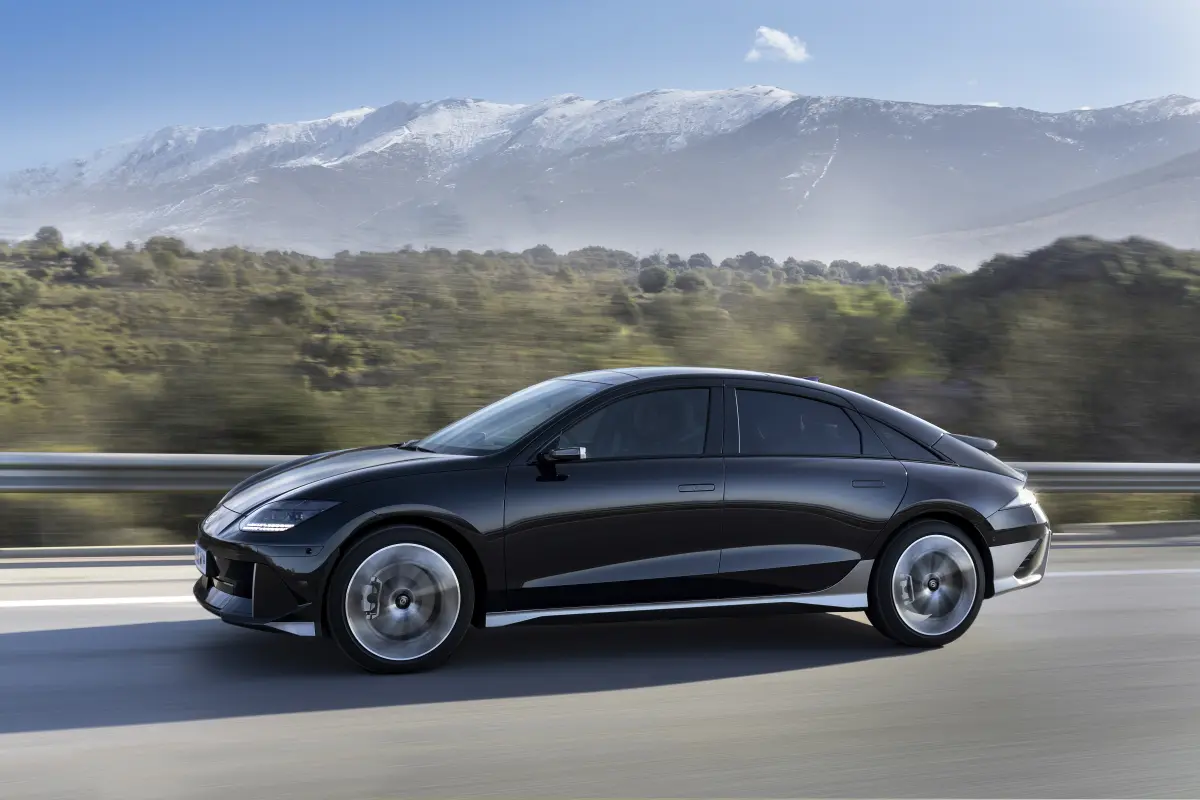
Since we not only kept to the prescribed maximum speed of 130 km/h on Austrian highways, but also did not exceed it on the A8 as far as Salzburg, we ended up with an average consumption of just 15.4 kWh/100 km in the mix of all driving profiles. An excellent value for a vehicle in this category.
Obligatory stop at the Hotel Kaiserhof
The sustainable Hotel Kaiserhof in Anif near Salzburg has long been a familiar name to many e-car drivers, not only in the German-speaking world, because anyone coming from Germany in the direction of Vienna or heading south to Carinthia, Styria or the Balkans likes to stop off there. Guests and transients can expect not only the considerable number of over 40 charging points, including even a dozen Tesla Superchargers, but also a fine, Styrian cuisine. The owner couple Ina and Richard Absenger were among the first e-mobilists, and so the two recognized early on the opportunity that could arise for a charging and enjoyment destination, also due to the hotel's location not far from a high-frequency highway junction. The fact that their "eat, sleep & charge" concept has paid off is reflected in the fact that lingering charging guests contribute up to 70 percent of total restaurant sales on some days. And because the host is aware of the importance of price transparency for charging offers, the Kaiserhof parking lot has a classic display visible from afar, like the ones we see at gas stations. Except, of course, that the charging prices are listed here.
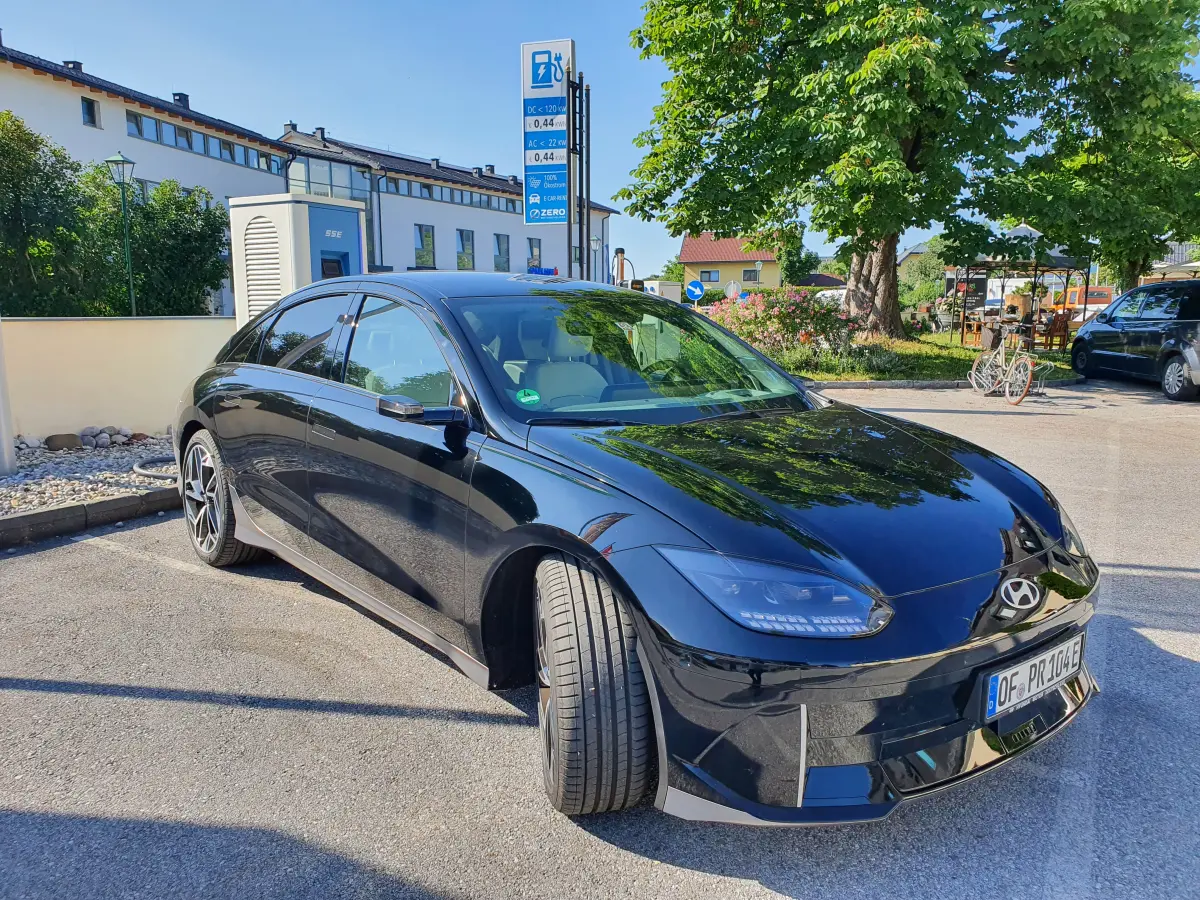
Although not yet necessary, we took the opportunity to take a small "sip" of electricity from the bottle, while we had coffee and cake and Richard gave us the traditional update on his e-mobile and solar activities. He also rents and sells various e-vehicles, including electric motorcycles of the American brand Zero.
When it comes to charging, one key aspect that makes the IONIQ 6 an electric car that is absolutely suitable for touring and long distances should not go unmentioned: its charging speed. Alongside its brand brother IONIQ 5 and sister models from KIA and Genesis, it is one of the very few electric cars to feature 800-volt charging technology. Especially in a price segment between 40 and 80 thousand euros. This means that the 6-series of the Hyundai sub-brand IONIQ would theoretically be able to draw more than 300 kW at high-power chargers, such as those increasingly installed along trunk roads and charging parks, to go from 10 to 80 percent charge in 18 minutes. Our test vehicle, which was pre-conditioned for the charge stop, managed a peak of 230 kW, which comparatively only marginally extended the time we spent at the charger. Almost too short to treat ourselves to a coffee at the rest stop. Nevertheless, we did so from time to time and then drove on with a 100 percent charge level. However, this should generally be avoided in order to conserve the battery.
Optics and functions
The dictates of aerodynamics naturally have an impact on the car's exterior appearance. In contrast to some of our colleagues in the journalistic guild, we do not find the Korean car's exterior design to be particularly bold or even polarizing, but rather quite elegant. At most, the rear end with a larger spoiler and a smaller "stern" brother further down is a matter of taste. Some of the people we spoke to on our tour liked this part in particular, as it stands out from the usual design language of sedans.
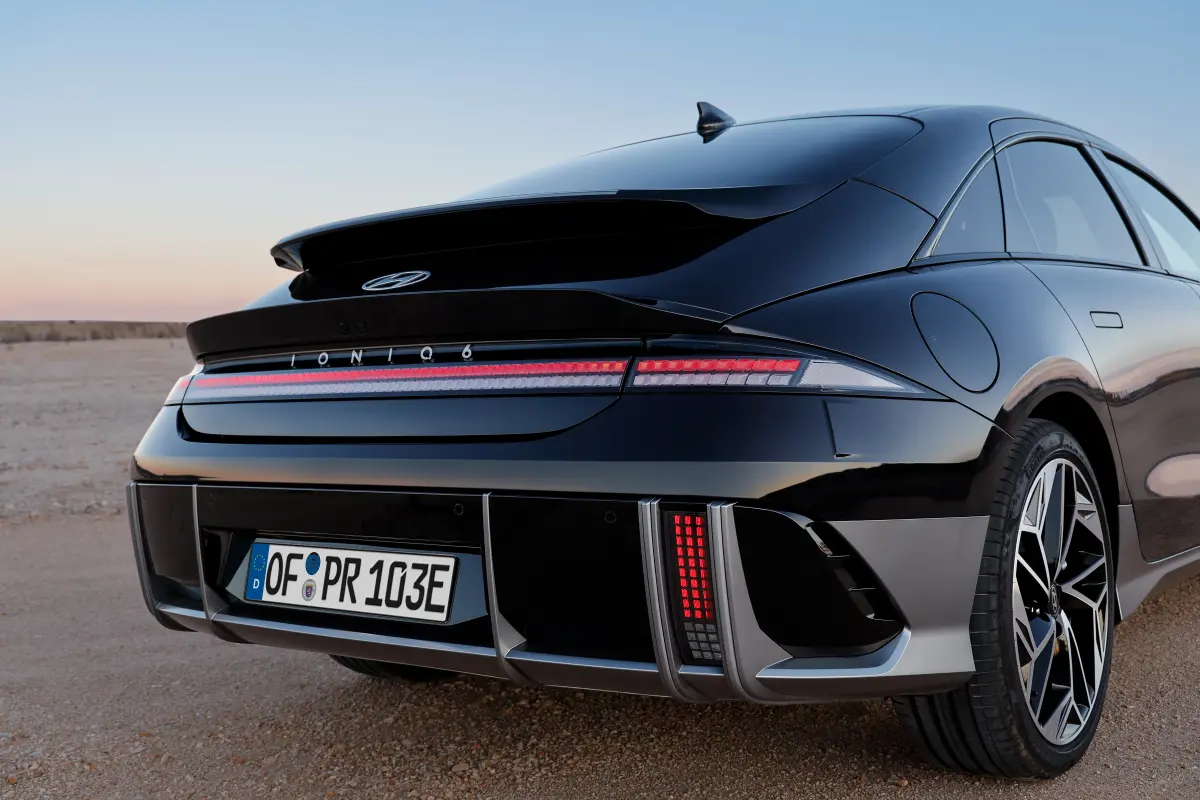
Fortunately, there are still quite a few mechanical buttons in the interior and also a rotary knob for volume control. This makes it easier to operate frequently used functions and is less distracting from the traffic than wiping and touching on screens. Speaking of operation: To give the doors a clean look on the inside, the power window switches have been moved to the center console.
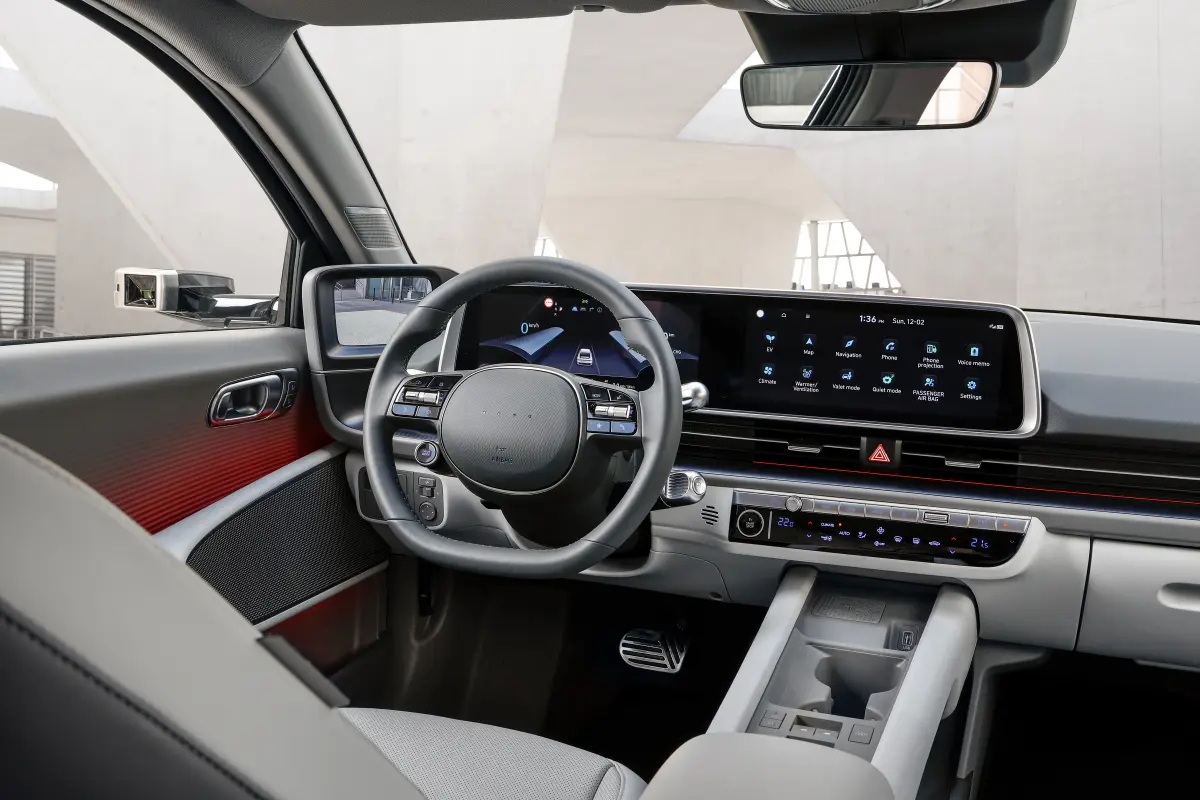
Although this is not a detriment, it took a bit until the new positioning was stored in the head. On the other hand, it took longer to adapt to a special feature of the fully equipped test car. Instead of the usual exterior mirrors, it was equipped with digital exterior mirrors. These transmit the rearward events in the adjacent lanes to the two screens positioned in the corners of the console.
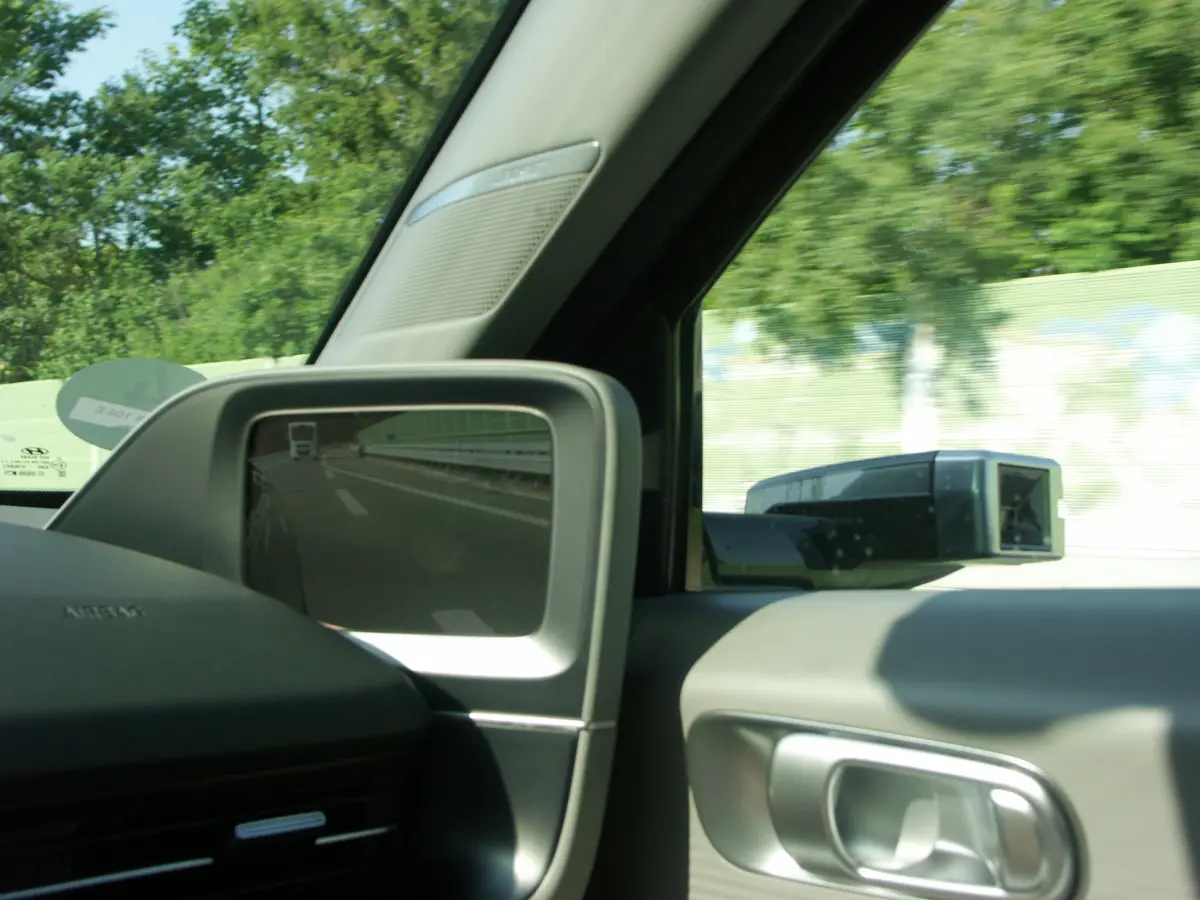
A useful function when overtaking is the line markings that appear, which make it easier to measure the distance to the cars in the other lanes. After we were used to looking outward at the cameras in the beginning, we didn't want to miss the digital optics assistant after a few days because it allows a wider viewing angle than conventional mirrors. Thus, those who want to buy this feature for a surcharge of 1300 Euros will get more than just a nice "gag".
The blind spot assistant, which shows an image of the hidden traffic area in the driver's display when the turn signal is activated, is beyond skepticism. A useful function that is not tied to the presence of the rearview mirror cameras.
Another positive feature was that the handles, which are flush with the doors for optical and aerodynamic reasons, open automatically when unlocked. In the IONIQ 5, this still has to be done manually, which is a bit fiddly. At least with just one hand.
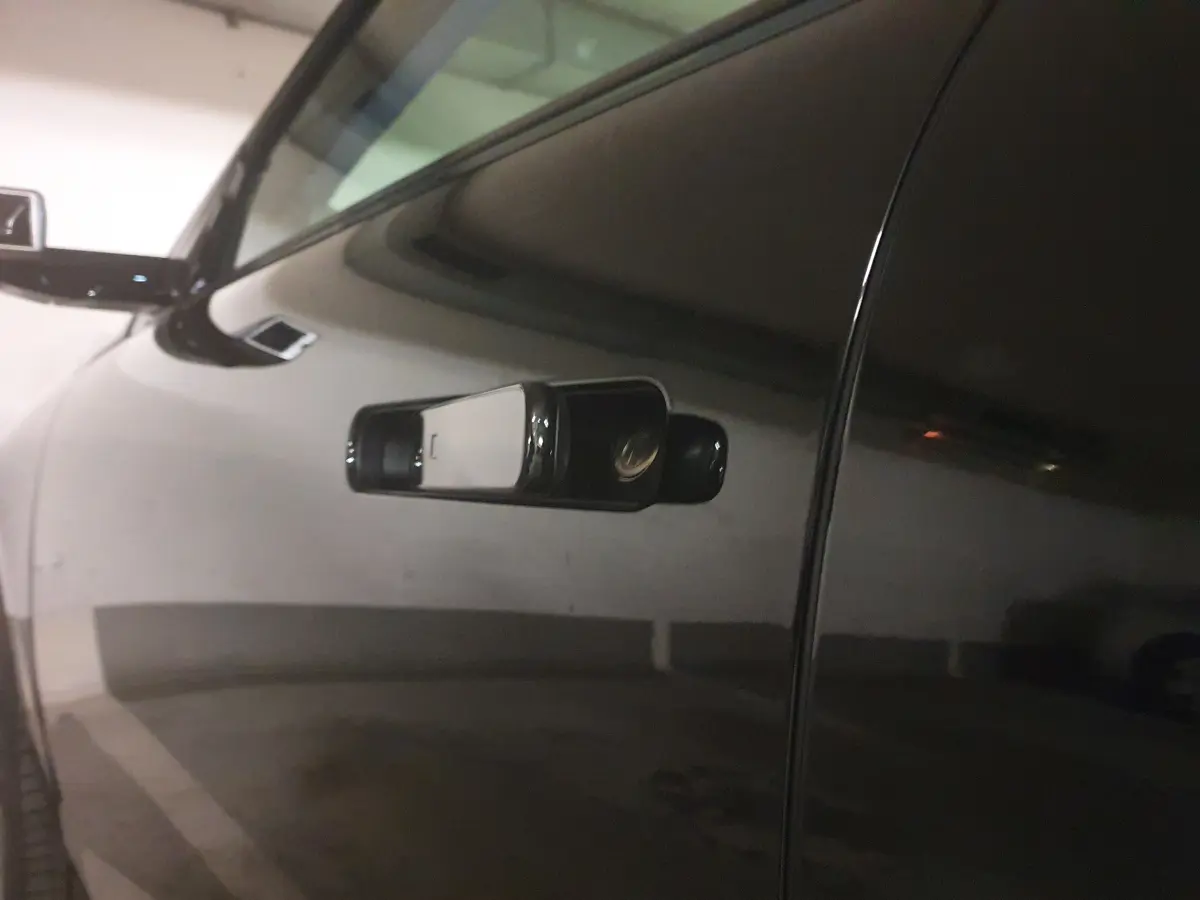
Why "eco-electricity"?
It goes without saying that its low fuel consumption has a positive impact on the IONIQ 6's eco-balance. Even if one might criticize the fact that the plastic surfaces dominating the vehicle's interior do not give a particularly cheap impression, but not a particularly noble one either, the choice of materials makes perfect sense from a sustainability point of view. For example, recycled pigment paints from used tires, recycled PET fabric for the seats, a bio-rubber blend for the dashboard, bio-PET fabric for the headliner, bio-paint made from vegetable oils for the door panels and recycled fishing nets for the carpet are all used. Our readers can learn more about this in the interview with the Hyundai designer responsible for the material selection, which we will publish soon.
Impressions on the trip
Due to its design, a mid-size sedan does not offer an excessive amount of space, e.g. for travel utensils for four occupants. The two of us - as always equipped with too much luggage - managed well with the 405 liters of volume. Not an outstanding value, but a decent one nonetheless. A small additional space is found under the front hood in the form of a 45-liter "frunk," which, however, shrinks to just 15 liters in the all-wheel-drive model.
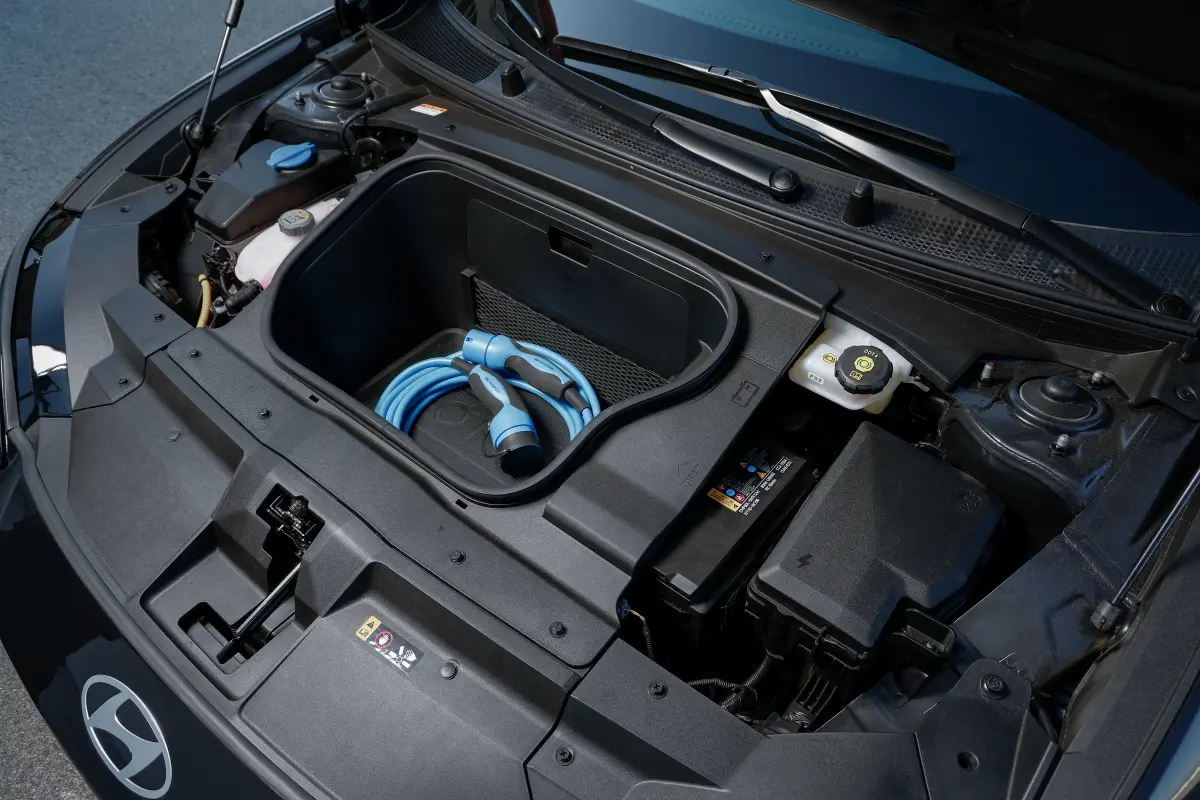
All trips with the IONIQ proved to be comfortable, because the chassis of the Ioniq 6 proved to be rather tightly tuned, but at the same time quite comfortable, both on the highway and in curvy mountain passages. The strength of the recuperation can be adjusted via paddles on the steering wheel. This works in several stages and unfolds maximum effect in the "i-Pedal" mode, whereby the vehicle brakes to a standstill. We used this setting especially in the mountains, but on the highway we let the Hyundai "sail" without energy recuperation.
Update: Hyundai confirmed that the annoying function has been revised in the meantime, which will benefit all buyers of vehicles delivered in 2024. It is possible that the IONIQ 6 already put on the market will receive a corresponding revision in the workshop.
Relaxation and culinary delights at the destination
Not only the journey to the beautiful nature and vacation region in the UNESCO Biosphere Park Nockberge turned out to be a relaxed affair thanks to our comfortable "glider", but also the stay on site provided pure relaxation and enjoyment. The Forstnig host family and their team from the GUT Trattlerhof & Chalets in Bad Kleinkirchheim contributed to this in particular. This destination not only offers its guests a wealth of wellness facilities and excellent "slow food" cuisine, but is also a role model for sustainability in the hotel industry. For its diverse eco-activities, the business has been awarded the European ECO Label as well as the Austrian Eco-Label.
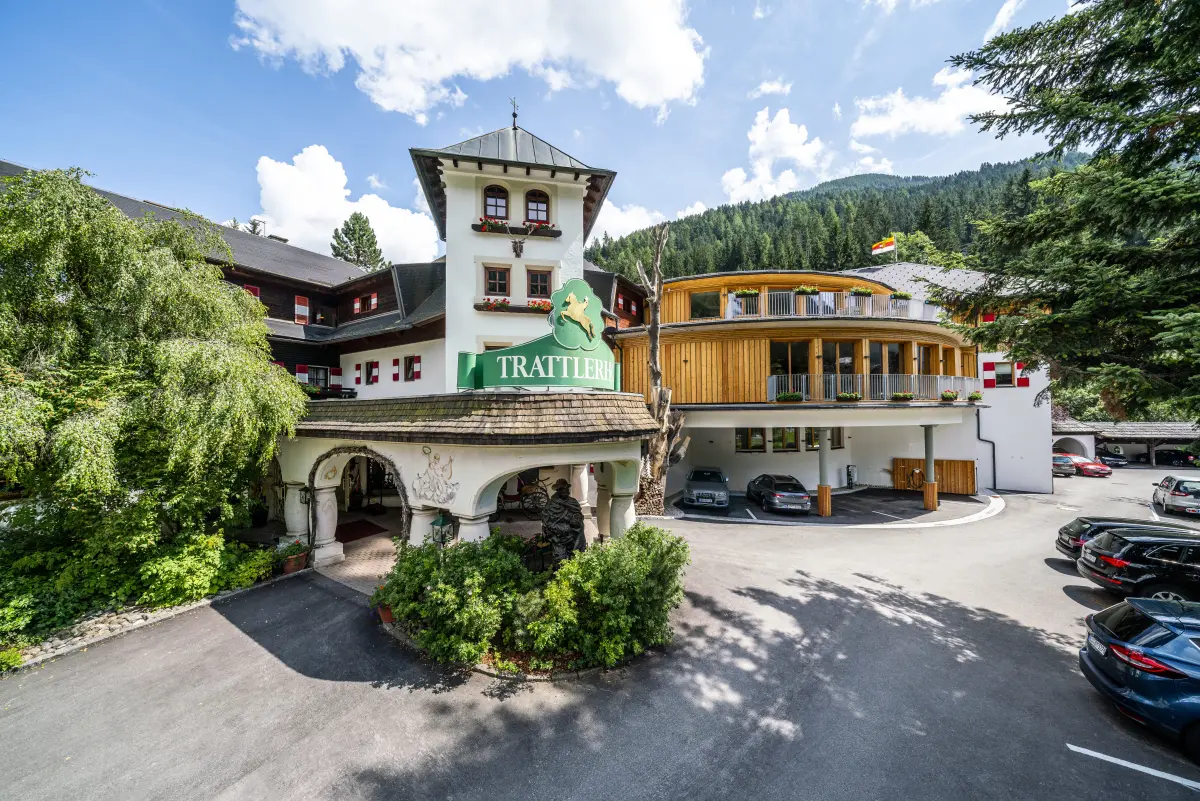
Especially the efficient use of water and electricity as well as the use of renewable energy are emphasized at the hotel. Unique: The estate even has its own electricity plant that generates electricity with hydropower, making the Trattlerhof together with its chalets, riding stables and the restaurant "Trattlers Einkehr" 100 percent self-sufficient in electricity. What's more, additional electricity is even generated to supply other businesses and households in the village. The entire business was already converted to regional district heating from renewable energy sources in 2014. Since then, staying at the Trattlerhof is not only CO2 neutral, but each guest also saves 58 kilograms of CO2 equivalent emissions per night compared to a reference hotel as a result of these measures. The Trattlerhof is therefore the first Austrian hotel to issue its guests with CO2 certificates attesting to how much greenhouse gas they have saved through their vacation at the Trattlerhof. Of course, vacationers can also actively participate in the environmental program, for example, through an "environmental euro" offer. Guests who forgo cleaning their rooms receive an environmental bonus of three euros per day credited to their drinks bill at the house bar.
Even if it is no longer all that common for hotels in tourist regions to be unable to offer their guests charging facilities for their electric vehicles, the corresponding offer is often limited to (too) few chargers, which are often only available to owners of Tesla vehicles. Not so at the Trattlerhof.
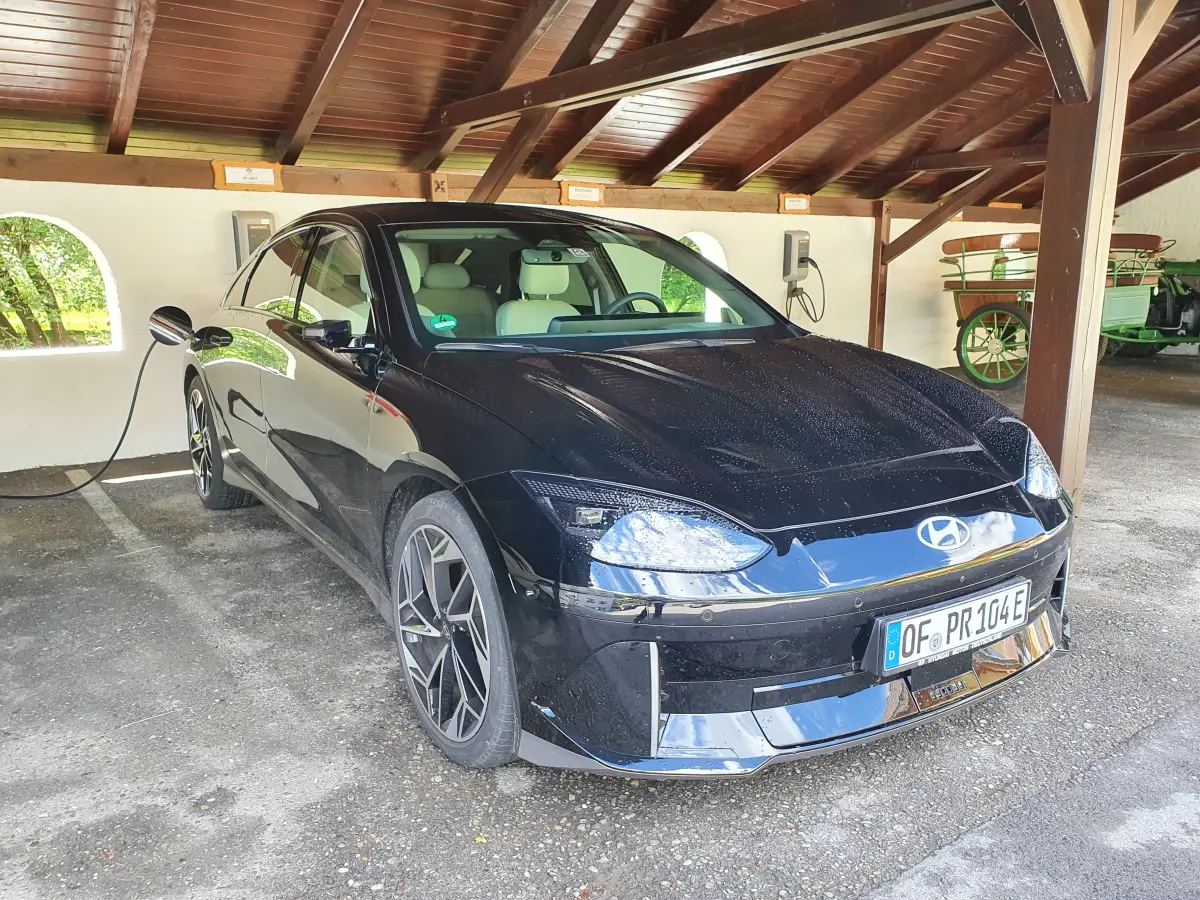
The guests of the house can easily "recharge" their own "Stromer" at the covered charging stations at the hotel, at the farm chalets and at the hut restaurant Trattlers Einkehr. And this even with self-produced green electricity from hydropower. A total of 18 charging points, including a public Fast Charger in front of the hotel, are available to them. This offer is valid not only for all hotel guests, but also for locals and external tourists.
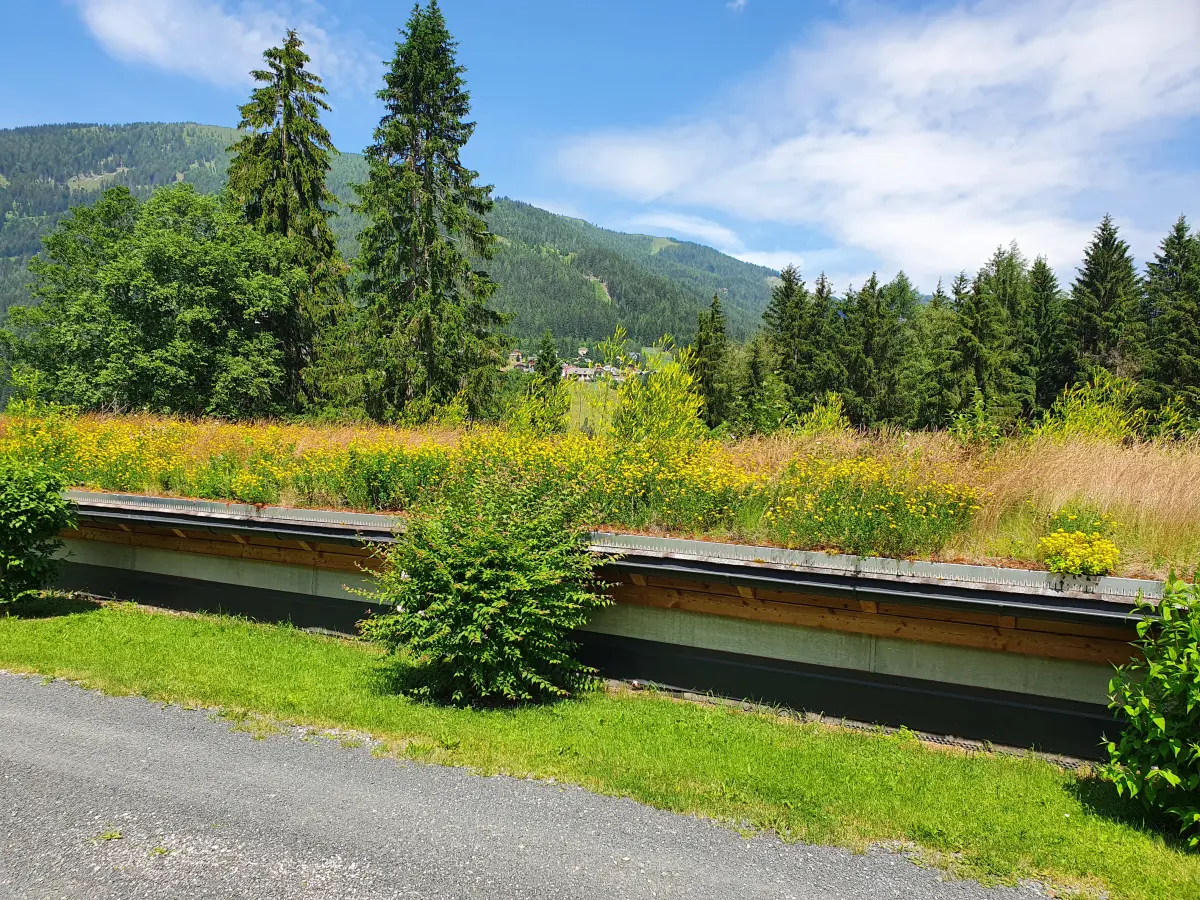
Nature experiences in the UNESCO Biosphere Park Nockberge
The biosphere park offers its visitors impressive nature experiences in all seasons. You can go on an individual exploration tour, for example on the "Slow Trails" Zwergsee and Mirnock, or join a guided tour by a ranger who is knowledgeable about the area and nature. In addition, an annual adventure program of the biosphere park offers a wide range of activities such as summit, autumn or alpine pasture hikes. Nature lovers can also learn a lot about botanical specialties on guided tours. Highlights include the stone pine and especially a small, rather inconspicuous flowering plant, the "Echte Speik". Its roots are dug out with care without endangering the stocks, which are found almost exclusively in this region. Only the German-based company Speick has the permission to process the spicy-smelling plant in various natural cosmetics.
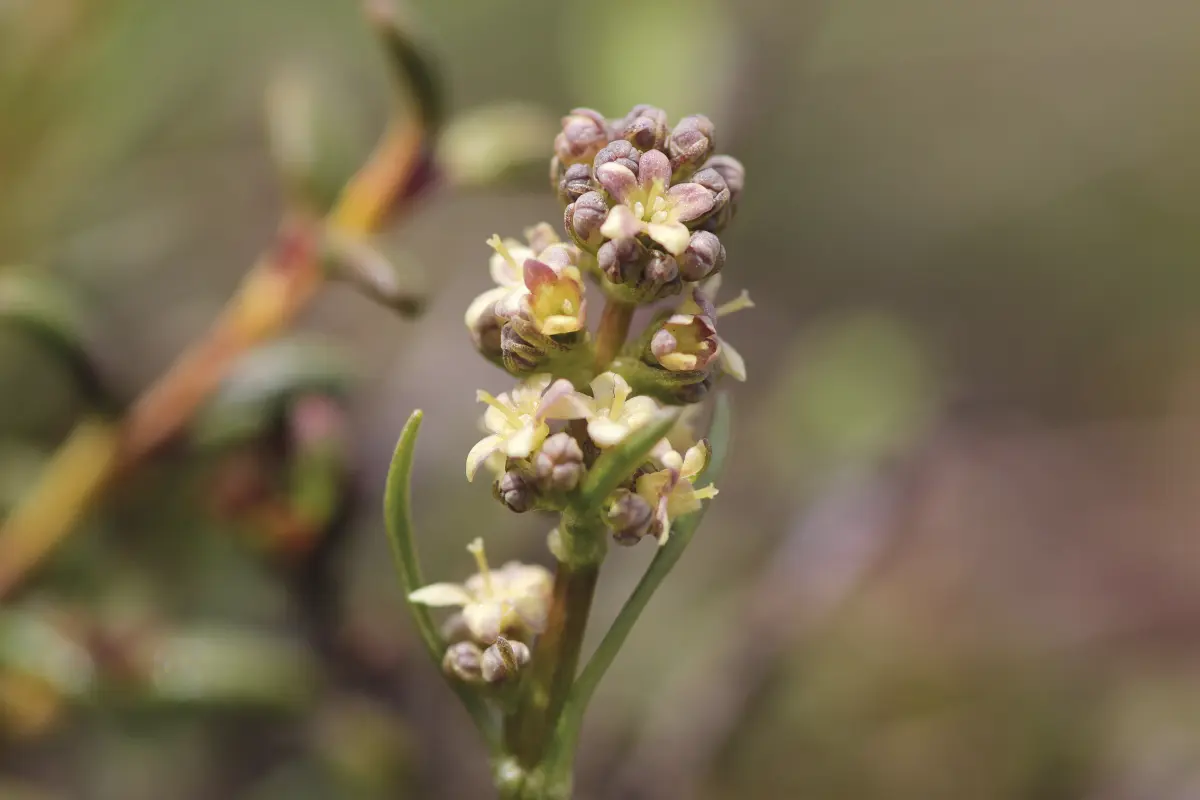
The Biosphere Reserve has a broad spectrum of species, as was shown by an expert excursion during which 1048 different species of animals and plants were identified in one day alone. This diversity is extraordinarily pronounced for mountain habitats. Since some peaks of the Nockberge were not glaciated during the last ice age, many endemic species can be found here that only occur in this small area. For example, the Mornell's plover has an island-like remnant occurrence here outside its main habitats in the northern tundras. In addition, all native species of grouse - snow grouse, black grouse, capercaillie and hazel grouse - breed in the Nockberge. In addition, other alpine species such as golden eagles, chamois and marmots can also be observed in the area with a little patience and luck.
By the way: Unlike other summit regions of the Alps with their mostly rugged rock structures, the various Nock mountains have rounded crests. This is also the origin of the name "Nock" ("knoll").
Text: Peter Grett
Images:
Lead story, Image 1 Side view IONIQ 6, Image 3 Rear view, Image 4 Interieur, Image 7 Frunk: Hyundai Motor Germany
Image 2 Charging am Hotel Kaiserhof, Image 9 IONIQ 6 at the store at Hotel Trattlerhof, Image 10 green chargeport roof: Peter Grett
Image 5 digitaler Exterior mirror, Image 6 Door handle: Anett Tobies
Image 8 Hotel: GUT Trettlerhof & Chalets
Image 11 Echter Speik: Speik natural cosmetics
Images 12-14: Karlbad and Windebensee: Heinz Mayer; Zirben und Alpenrosen: Helmut Moik

